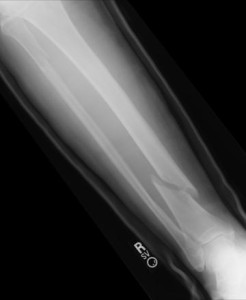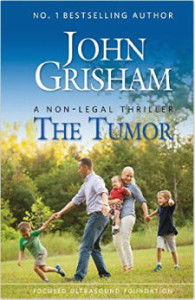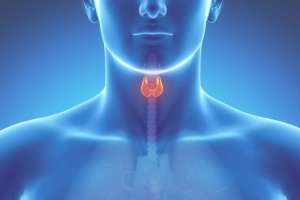Low Intensity Pulsed Ultrasound doesn’t improve bone fracture healing
 Low intensity ultrasound after surgical repair of a bone fracture is a popular treatment to improve recovery, but it doesn’t work, says a large international study led by researchers at McMaster University.
Low intensity ultrasound after surgical repair of a bone fracture is a popular treatment to improve recovery, but it doesn’t work, says a large international study led by researchers at McMaster University.
In a clinical trial published by The BMJ today, the researchers show no difference in the recovery time between using low intensity pulsed ultrasound (LIPUS) or a placebo device for patients with a fractured tibia (shinbone).
An accompanying editorial, also published today, suggests “it is time to abandon this ineffective treatment” now that there is strong evidence it doesn’t work.
“LIPUS is commonly used in North America to accelerate fracture healing — generating about $250 million in sales a year – but there has been no clear evidence of benefit to support its use,” said principal investigator Jason Busse.
Busse is an associate professor of anesthesia and a researcher with the Michael G. DeGroote Institute for Pain Research and Care at the Michael G. DeGroote School of Medicine at McMaster.
LIPUS was approved for fracture healing by the U.S. Food and Drug Administration (FDA) in 1994. Interventions to aid recovery have been popular for tibia fractures since this common fracture heals slowly and often needs further surgery to heal completely.
The international research team conducted a randomized controlled trial of 501 patients at 43 academic trauma centres in North America who underwent surgical repair for a tibia (lower leg) fracture between 2008 and 2012. The patients were assigned 20-minute daily treatment with either a LIPUS or a placebo device which looked the same. Everyone involved, including the physicians, data collectors, data analysts and the patients were blind to which treatment was used. Patients were followed until x-rays showed their fracture was healed, or for 12 months.
There was no difference in time to functional recovery whether patients were treated with the active or placebo device. There was also no difference in quality of life, return to work, leisure activities, or time to full weight-bearing.
Co-principal investigator Mohit Bhandari, who is a professor of surgery at McMaster, pointed out the importance of ensuring medical devices are supported by evidence.
“LIPUS was approved for fracture healing on the basis of small trials that had important limitations, and they focussed on radiographic healing instead of patient important outcomes,” said Bhandari, who also holds the Canada Research Chair in Evidence-Based Orthopaedic Surgery.
“The new trial results establish that LIPUS has no role in managing patients with surgically repaired fractures.”
In the accompanying editorial in The BMJ, Xavier Griffin, an associate professor of trauma surgery at the University of Oxford, said the results were clear.
“These authors report important patient-centred outcomes…showing that low intensity pulsed ultrasound is of no benefit to adults with tibia fractures,” he said. “It is time for us to make good use of their determination and abandon this ineffective treatment.”
This study was funded by the Canadian Institutes of Health Research and Smith & Nephew, specialists in surgical devices and wound care.
Original article can be found here.
[yop_poll id=”1″]
 This book is free, with only 46 pages. An easy read, but with a powerful story and message. John Grisham writes on behalf of the whole Focused Ultrasound Foundation. For most of us working with ultrasound, it should spark that sense of urgency to get to the finish line and see your product helping those suffering from this terrible disease.
This book is free, with only 46 pages. An easy read, but with a powerful story and message. John Grisham writes on behalf of the whole Focused Ultrasound Foundation. For most of us working with ultrasound, it should spark that sense of urgency to get to the finish line and see your product helping those suffering from this terrible disease.


